Reality television barrels its way into surfing with ABC’s ‘The Ultimate Surfer’
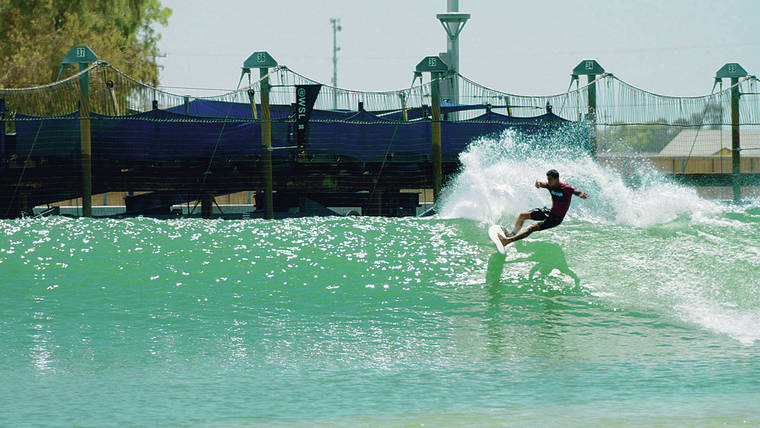
COURTESY ABC
Zeke Lau of Honolulu, one of 14 contestants in the reality TV show “The Ultimate Surfer,” slashes a wave at the Surf Ranch in Lemoore, Calif. Hawaii surfers Brianna Cope, Kai Barger and Koa Smith also competed in the show.
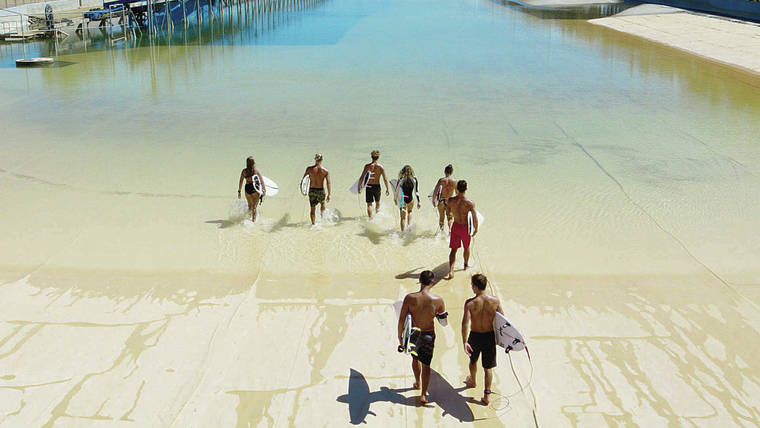
COURTESY ABC
Contestants head out to manufactured waves at the Surf Ranch, which Kelly Slater designed.
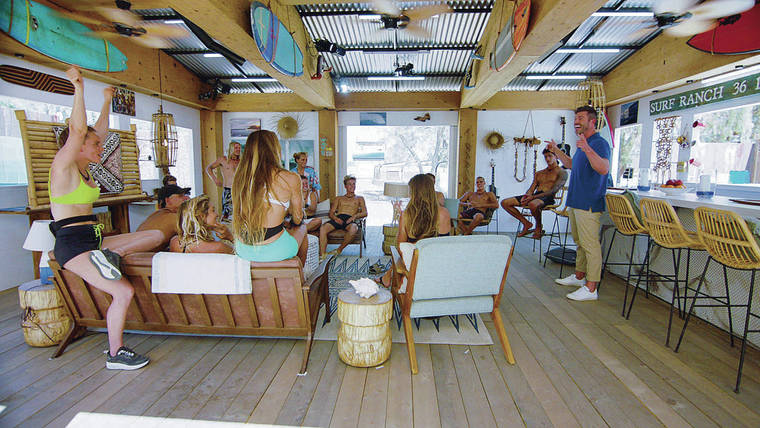
COURTESY ABC
Surfers get some exciting news about the day’s activities during an episode of “The Ultimate Surfer,” which offered a top prize of $100,000 and a spot on the World Surf League’s Championship Tour.
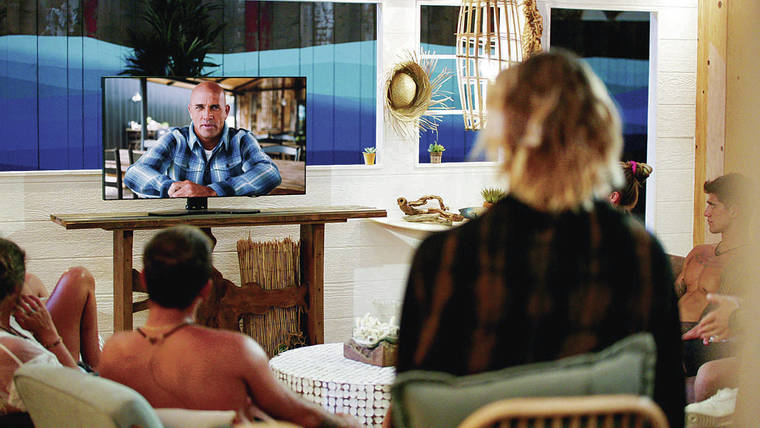
COURTESY ABC
“The Ultimate Surfer” is a surfing-based reality TV show that has a two-night premiere this week on ABC. It features Kelly Slater, shown making a video call with contestants, as a special correspondent.
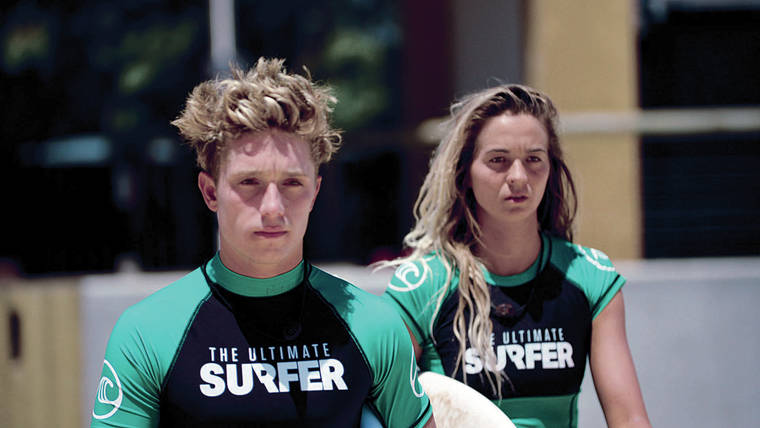
COURTESY ABC
North Carolina surfer Mason Barnes, left, teamed with Hawaii’s Brianna Cope for part of the competition.
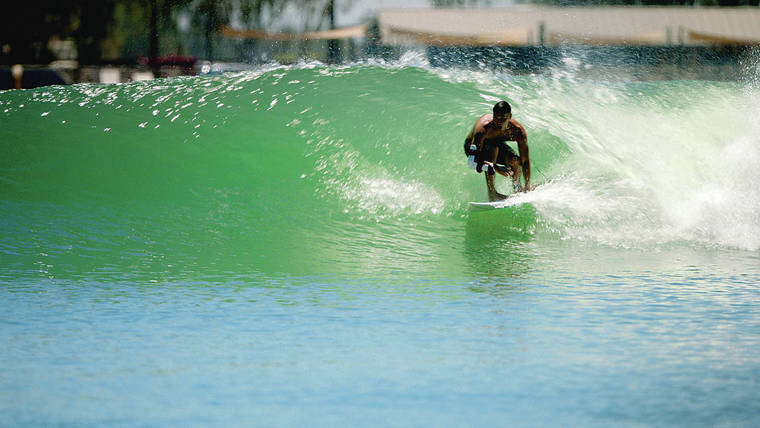
COURTESY ABC
Kai Barger of Maui is one of several Hawaii surfers on the show.






In the classic 1966 surf documentary “The Endless Summer,” two California surfers went on a quest for the “perfect wave,” which was then believed to be in South Africa. Since the cost of the ticket was almost the same as a round-the-world plane ticket, they decided to chase the summer around the world instead.
This summer, 14 surfers, including Ezekiel “Zeke” Lau of Honolulu, Kai Barger of Maui, Brianna Cope of Kauai and Koa Smith of Oahu’s North Shore, gathered in farm country in Central California, also to ride “a perfect wave.”
The cost? Their privacy.
“There’s cameras around you 24/7, there’s microphones around your neck,” said Smith, who coincidentally wound up traveling to South Africa after shooting to make a surf video. “Anything you say can potentially be on the show. That is the nerve-wracking part. We’ll see what happens.”
Their story will be told starting this week on “The Ultimate Surfer,” a surfing-based reality TV show that has a two-night premiere this week on ABC. The show was shot over a monthlong period in Lemoore, Calif., at the Surf Ranch, the World Surf League’s artificial wave pool designed by surf legend Kelly Slater. He appears on the show as a special correspondent.
At stake is a cash prize of $100,000, but more importantly, a place on the league’s Championship Tour, a series of surf contests for the world’s top-ranked men and women surfers. They earn their way onto the tour by piling up points at qualifying contests and must keep having success on the tour to stay.
Don't miss out on what's happening!
Stay in touch with breaking news, as it happens, conveniently in your email inbox. It's FREE!
Lau knows how tough the Championship Tour is. The Honolulu native made the tour in 2017, but was dropped after three seasons.
“All I knew was that the winner of the show was going to get some spots on the tour the following year. Pretty much that was my whole driving force,” Lau said. “I knew this was way out of my element, but the tour was somewhere I want to be, regardless. I want to be surfing against the best in the world and representing Hawaii on that stage.”
LIKE ALL reality TV shows, “The Ultimate Surfer” drummed up the drama. In addition to surfing, contestants faced skills tests, team-building exercises and other challenges that could help or hurt them along the way. They couldn’t reveal much about those trials before the show is broadcast, but Lau said they added a twist to the solitude of the competitive surf world.
“Surfing is an individual sport, so to be working with other people was kind of refreshing and kind of made it fun,” he said. “It pushed me out of my comfort zone. I think I learned a lot about myself and I was able to grow. It was a really good experience for me.”
Cope, who when not competing frequents the waves on Kauai’s south shore, was particularly enticed by the Surf Ranch’s consistent, 400-yard-long wave. She was not disappointed.
“It was just unreal to be there,” she said. “To have a machine-made wave, instead of sitting out in the ocean and waiting for a wave to come, you know exactly when it was going to come and you knew exactly how the wave was going to be. Honestly, I think it was the best thing for my surfing, to get that opportunity out there and get that wave.”
Surfing has been a savior to Cope. She was born with a deformed left hand, and as a child she was bullied over it. “Being different was really tough for me, and that’s why I fell in love with the ocean,” she said. “No one would ask me questions about my hand, because no one could see me.”
Now she’s happy to share her life, posting videos of her grueling workouts online. She’s undertaking aerial surf maneuvers.
“Strength and stability are really important for me for landing those aerials, because I’m pretty big for a female surfer,” said Cope, who is 5’11”.
Off the water, the scene at the Surf Ranch was extremely competitive but otherwise friendly, Cope said. The surfers stayed at a camp specially set up for them, with no outside visitors and not even cellphones except for emergencies. Although previews showed that producers tried to introduce a romance element into the show by bringing in some other young, attractive adults, Cope would have none of it.
“I said this when I was on the show, but if I wanted a date I would have gone on ‘The Bachelor,’” she said with a laugh. “I was so focused on competing. The ‘love goggles’ weren’t really on and I was on full game mode.”
Barger was feeling a bit nervous about the premiere of the show, since it will give exposure to competitive surfing in an especially revealing way. “In the surf world, we’re sort of just among ourselves, and not too many people are invested in watching other than like friends, family and peers for the most part,” he said. “(But) this is set up for America to see.”
BARGER grew up surfing Ho‘okipa Beach on Maui’s North Shore with summertime sessions at Lahaina. As a competitor he’s ridden waves around the world, but he called the Surf Ranch wave “probably the most incredible thing I’ve ever seen” as well as “the hardest thing to wrap your head around.”
“It’s in the desert, so you have no idea where the ocean is, and the landmarks that you’d normally line up with are no longer there,” he said. “Everything about it was really confusing compared to a wave in the ocean, even the way that it moves, the way the water kind of ebbs and flows, even down to the buoyancy of the water.
“All these factors that you normally would be analyzing and getting used to were thrown out the window and all of sudden there’s a train moving down towards you, sending this really fast wave, and everyone’s watching. I’ve never felt so much pressure to catch a wave in my entire life.”
Smith, a Kauai native originally, also said the Surf Ranch wave posed some challenges. The wave has three settings, and for the show it was set for barrel-riding and turning. “It was a lot bigger than I expected,” he said. “It was almost a bit intimidating at first.
“It’s pretty powerful. I think the main factor is that it’s a cement bottom that’s only about 1 to 1-1/2 feet deep, so if you’re all the way on the top of the lip trying to do an air and overshoot it, you can put yourself in a pretty dangerous situation.”
Smith is a longtime competitor who turned to filmmaking to support his surfing instead of relying on sponsorships. He also runs an Oahu family business with three locations called The Sunrise Shack, which sells coffee and health food.
He said viewers should get a chance to see what “the real surf world is like.” Most of the contestants knew each other from years of surfing competitively and recreationally.
“It’s always a gamble when you’re getting filmed day in and day out,” he said. “People can say things they don’t mean.”
He admits that a reality show centered on surfing could be “cheesy” — the show has been criticized for a variety of perceived flaws, like failing to invite surfers from foreign countries.
For the competitors, however, it was just pure excitement, he said.
“We had no idea what we would be doing each day,” he said. “You just had to be ready and be in a very clear mind space. Your body had to be ready. Your energy level had to be high. You had to be ready to do whatever they presented us with. And that was just a very weird, exhausting space to be in, but it was very gratifying too.”
—
WATCH IT
“The Ultimate Surfer”
Two-night premiere airs at 9 p.m. Monday and Tuesday on ABC.



